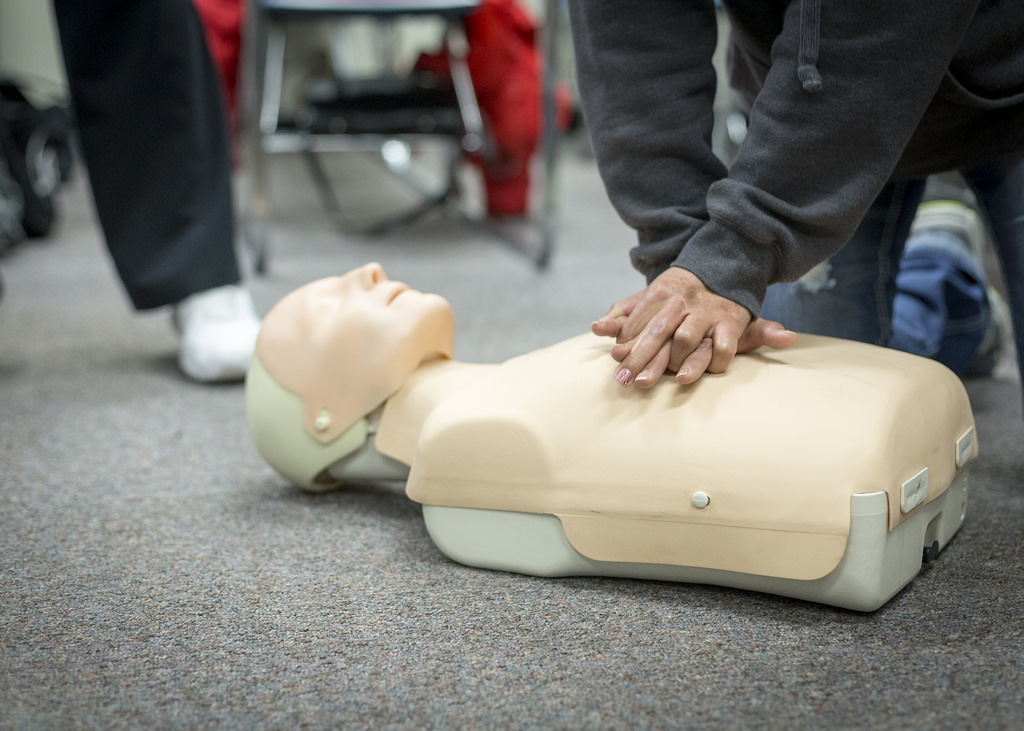CPR has changed noticeably in the past decade—and the trend appears to be moving toward simplification. New American Heart Association research suggests that CPR can be performed with good results while leaving out the rescue breaths—a development that makes the skill easier to learn and remember. In addition to the guidelines themselves, new changes and developments in CPR education have made the skill accessible to more people—and this trend is likely to continue. Here’s a detailed look at how CPR and CPR training may evolve in 2015.

CPR Today is Simpler Than it Was a Decade Ago
The American Heart Association released new guidelines back in 2008 that promoted “hands-only” CPR without rescue breathing. According to the organization’s research, chest compressions alone are sufficient to save a life, and rescue breathing can sometimes present a barrier to providing a cardiac arrest victim with CPR at all—either because the steps with rescue breathing are too complicated to remember or because bystanders are afraid of potential exposure to pathogens.
The American Heart Association is committed to making CPR more accessible to the public, as bystander CPR can double or even triple a cardiac arrest victim’s chances of surviving. Because of this, the organization continues to look for ways to simplify the process and ensure that victims get CPR more quickly. For instance, it is no longer recommended that bystanders check for a pulse before beginning CPR—research shows that most laypeople cannot effectively find a pulse within a few seconds anyway.

It’s Easier Than Ever to Learn CPR
In the past, the only way to learn CPR was to take an in-person class. Today, online CPR training videos are more accessible than ever—and it can take only minutes to learn hands-only CPR by video. This is a great thing for CPR, as it means more and more people can learn the skill in their homes and without a big commitment in time and money.
There has also been a push recently to install CPR training kiosks in public places. For instance, in 2013 the American Heart Association sponsored the installation of a kiosk at the Dallas-Fort Worth International Airport in Texas that offered CPR training—including hands-on practice and assessment on a mannequin. The kiosk was part of a study assessing how undergoing a fast training session—the video was only a minute long—affected the confidence of trainees in delivering CPR in an emergency.
The study results were optimistic, suggesting that installing the kiosks in public places could be a great way to boost bystander confidence in delivering CPR. Based on the study results, it’s possible that more of these kiosks could be installed in public places throughout the country in the coming year.

There’s No Good Time to Stop CPR
In the past, it was rare to perform CPR on someone for more than 30 minutes. However, recent studies suggest that prolonged CPR can increase the chances of survival for some patients—including, in a particularly dramatic instance, a diesel mechanic who survived cardiac arrest after 45 minutes of CPR. The guidelines are evolving, and the medical community still isn’t sure why prolonged CPR works in some instances. But this is an issue that’s of interest to the medical community, and it’s possible that new research in this area will result in a more defined set of guidelines for when it’s advisable to continue CPR for a longer duration over the next year.

CPR Requirements in Public Schools
As part of the trend to educate non-medical personnel across the country in providing CPR, some states and school districts are introducing CPR training in public schools. Currently, approximately 20 states require high school students to learn CPR as a graduation requirement. The number of states with these requirements increased in 2014, and it’s likely to go up even more in the coming year.
In addition, the American Heart Association and other CPR training schools continue to develop and promote CPR training programs that can be introduced in any school nationwide. For instance, the American Heart Association’s Be the Beat http://bethebeat.heart.org/ program offers videos and training materials, curriculums, and more that make it easy for teachers to bring CPR into the classroom. As these programs become more widely known, it’s likely that CPR training at the high school level—and even in middle and elementary schools—will become more commonplace.

Growing Acceptance of Online CPR Training
Many in the healthcare industry are concerned about online CPR training, and there are good reasons for this. The industry is not well regulated, and there is little oversight in determining the requirements for teaching CPR online. However, there is increasing demand for online CPR programs that are respected by employers, accepted by state licensing boards, and satisfy the needs of working students for flexibility, affordability, and ease of use. This is especially true for working professionals who are required to maintain CPR certification in their jobs.
The truth is that online CPR training is here to stay—and it’s becoming more commonplace in a wide range of industries. Both the American Red Cross and the American Heart Association offer online CPR and first aid classes, and many online CPR training programs base their curriculums on AHA guidelines—including ours. Given the wider trends and growing acceptance of online education as a whole, it’s likely that online CPR training will become more commonplace and accepted in 2015 and in years beyond. As this happens, perhaps more regulatory attention will be paid to the industry—which could be a very good thing for ensuring the quality of these programs and improving public perception.
It’s difficult to say what 2015 will bring for the healthcare industry and for CPR research. However, it’s possible that more people will know CPR by the end of 2015. Our hope is that as CPR training becomes easier, more convenient, and more readily available, more and more people will become comfortable delivering bystander CPR—and more lives of cardiac arrest victims will be saved outside of the hospital.



